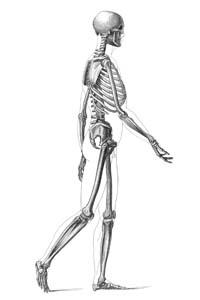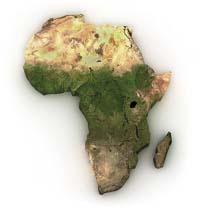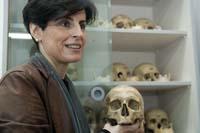Homo sapiens

Keys of the human species from the anthropological and genetic point of view.
The human species is the result of evolution. Today everything has adapted to the environment of the time. Anthropologists have been working for years to understand human evolution using fossils. And in recent years they have advanced a lot with genetic techniques. Therefore, anthropology and genetics go hand in hand in that desire to know what the human being is and what differentiates him from other animals.
From an anthropological point of view, UPV anthropologist Neskuts Izagirre considers that modern man is classified in five aspects: culture, bipedia, encephalization, dentition and language. Walking on two feet, having a developed brain and having a certain dental structure are purely physical characteristics. Culture and language are characteristics of another level.
Culture in capital letters
"Culture appears from the Homo habilis," says Izagirre, "for 2.6 million years, since the oldest elaborate instruments are then. This does not mean that the previous ones had no other kind of tools."
By definition, all of the genus Homo are human beings. At present, the only species of this genus is the Homo sapiens, but the human lineage emerged long ago and on the way there have been several species of this genus. Therefore, if you want to know when man was born, you will have to know who the oldest Homo was. And this, according to the current phylogeny, is the Homo habilis.

The path of Homo habilis al H. sapiens, evolution, has been built by anthropologists with found fossils. "When I studied anthropology, in the late 1980s," Izagirre recalls, "the phylogenics were very clear, the trees were simpler." As fossils have been discovered, new species have been needed in the phylogeny of the human lineage, leading to a more branched and complex phylogeny of the human lineage.
Neanderthal, for example, is catalogued by several anthropologists in the species Homo sapiens, also by Izagirre. "We prefer to classify neanderthal and modern man into the same species and differentiate subspecies, i.e. Homo sapiens neanderthalensis and Homo sapiens sapiens." That is why they use the term modern man instead of human.
Born and lives in Africa
And where does modern man come from? Two are the main theories, the so-called multiregional, which defends the simultaneous evolution of modern man in different places, and the other, Out of Africa, or the so-called outside Africa. The fossils that have appeared more recently coincide with the latter, even if more or less, and genetic data also bet on the latter.
"Genetic data show that modern man was born in Africa 200,000 years ago, from where he colonized all of Europe. That happened about 50,000 years ago," says Izagirre. Anthropologists raise several hypotheses, since they only have fossil clues to follow the displacements of species of the human lineage, there are not many and with them conclusions are drawn.
Referring to the multiregionalist theory, Izagirre says that "from Homo erectus, 2 million years ago, everyone would be Homo sapiens, to approve this theory." The contribution of genetics has been fundamental in this aspect, as explained by Ana Zubiaga, geneticist of the UPV: "There are at least ten people sequenced, belonging to different ethnic groups, and if the straight line was a multiregionalist model we would have to see more differences between groups than what we see."

The genetic difference between groups or individuals is called variability. And, according to Zubiaga, "with any marker it is observed that in the populations of Africa it is where more variability is, less in the European and Asian, which are also a sampling of the African. This indicates the place where the species normally originated, which means that it was there where the species stayed longer and, therefore, where the greatest genetic variability occurs."
New species
The sequencing of the nuclear genome has shown that "we are a very unversatile species, a rather boring species," says Zubiagak-- meaning that we will be a newly created species and that, probably, we have gone through at least one bottle of sama, that is, of very few individuals."
As for ethnic groups, they say they are quite similar in terms of variability. And "there is more variability among ethnic group individuals than among ethnic groups," explains Zubiaga. "The research published by Jaume Bertranpetit in the digital edition of Human Genetics magazine is also committed to it," he recalls. Among other things, he compared the Basques with those of other surrounding peoples using DNA microchips. "And he concluded that there were no big genetic differences. This is not to say that Rh and the other characteristics mentioned above are not true; if you compare two ethnic groups, you will see that certain genes and certain regions are different, but if in general, many sequences of this type are not enough to differentiate the two groups," explains Zubiaga.
In the wheel of evolution
New and unversatile species Homo sapiens. But it continues to evolve like all other species. Of course, in hundreds of thousands of years there can be no big changes. In Izagirre's opinion, "what happens is that when we think of evolution we all think that our morphological characteristics will change. But to see it, millions of years must pass, evolution continues, it continues, but the changes that occur are not physically seen."

Zubiaga agrees with Izagirre, "what happens is that man has culture. Natural selection affects everyone, but it is not so evident in human beings because of our culture." Ultimately, brain development caused the ability to adapt to the environment, reducing the impact of natural selection. However, at the level of genes it is observed that selection has influence, Zubiaga mentions a classic example: tolerance to lactose.
In animals in general, only pups have the ability to metabolize milk lactose. The same happens in humans, except lactose tolerance. The key is the lactase gene. A mutation of this gene caused adults to also maintain the activity of the enzyme that metabolizes lactose. When the mutation took place in the pastoralist peoples, the introduction of milk into food gave them a great advantage and that mutation passed to the generations to come. Thus, "instead of being all human beings of one type, we have intolerant and tolerant beings, even in adulthood," explains Zubiaga.
Interpreting the genome
Experts hoped that genome sequencing would answer some of the questions the person has in mind, such as the keys to evolution or the characteristics he distinguishes from other animals. The answers will be there, but they give work interpreting. Zubiaga recalls the expectation that the first sequences awakened. "When the drosophila fly came out with about 13,000 genes, we expected it to be much more, at least 100,000. But it was proved that we did not reach 25,000 either. A subject to make us more humble."
"And then, when the chimpanzee genome was sequenced, although it is not entirely sequenced, it was observed that only 1% was different, there are only 15 million base pairs." This prompted a number of questions, such as what those base pairs indicate and where they are. And in that search they began to investigate the genes, but, as Izagirre recalls, "there is very little difference in the genes".
In view of this, they also began to investigate the part of the genome that does not encode proteins. In fact, only 1% of the genome is gene and the remaining 99% may have some key to answer questions, although it was initially labeled as garbage.

However, as research progressed, they observed that differences between chimpanzees and human genes are also significant due to their reduced dimension. For example, the language-related FOXP2 gene. As Izagirre explains, "language is a complex quality and there will be thousands of genes affected," and one of them is FOXP2. "We wanted to know if there is a special mutation in humans in that gene, and a mutation was found that caused the modification of a single amino acid."
A group of genetics from Oxford University discovered the FOXP2 gene in research with an English family. In this family, some members had difficulty speaking and others had difficulty understanding what was said. And they discovered that the problem was in a single gene, the FOXP2 of chromosome 7.
Is the mutation of a single gene so influential? Yes, if it is a transcription factor. "In genes there is also a hierarchy," explains Zubiagak--, "the overlap of transcription factors implies that alteration of a single gene can cause a significant pleiotropic change," that is, it influences certain phenotypic characteristics, morphology, development, behavior, etc.
For all this, recalling the comparison between the chimpanzee and the man, Izagirre highlights: "To say that our genomes are the same is almost 99% simplistic. Today we know that we cannot base the comparison between two genomes on being or not just the same nucleotides." In Zubiaga's opinion, "little by little, as we're zooming in, we're seeing small things that can greatly influence their smallness."





